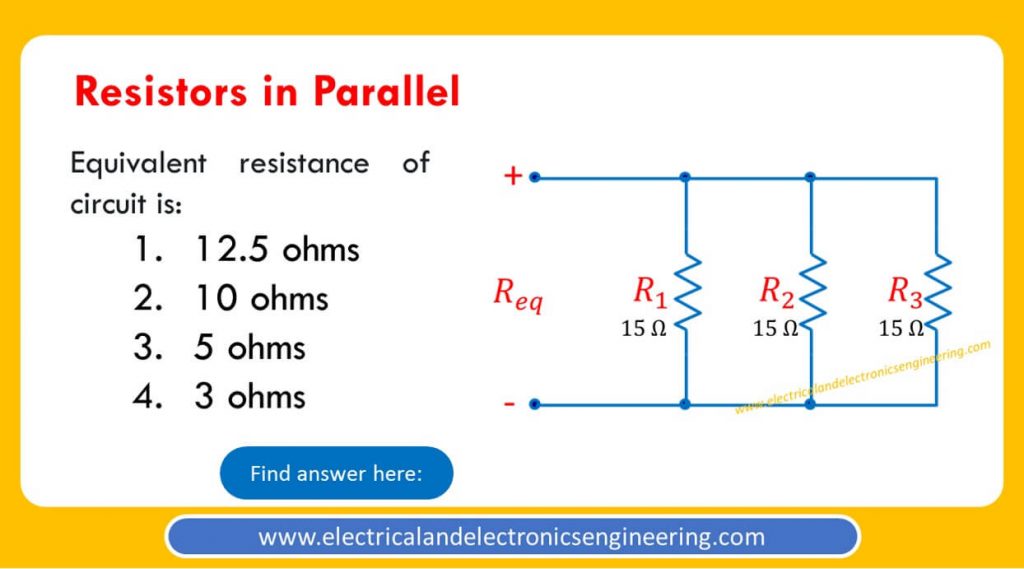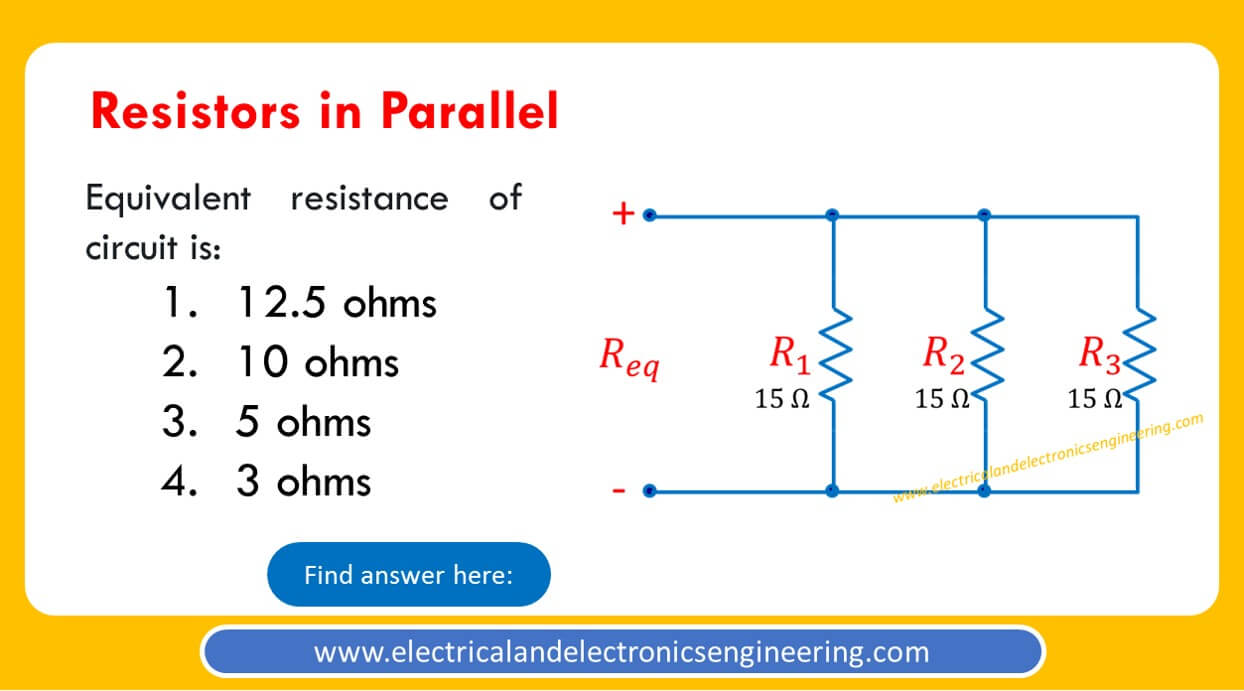Statement: Three resistors of 15 ohms are connected in parallel. The equivalent resistance is:
- 12.5 ohms
- 10 ohms
- 5 ohms
- 3 ohms
Answer: 5 ohms
Discussion:

Brief solution:
The basic formula for parallel resistors is:

In case of three resistors:
1/R(eq) = 1/R(1) + 1/R(2) + 1/R(3)
Solving this we obtain R(eq) = 5 ohms
Point to Remember
Whenever ‘n’ number of resistors all having same resistance (Lets say ‘x’) are connected in parallel, the equivalent resistance equals x divided by n.
That is R(eq) = x/n
In our case:
R(eq) = 15/3 = 5 ohms which is the equivalent resistance.
Further Reading:
